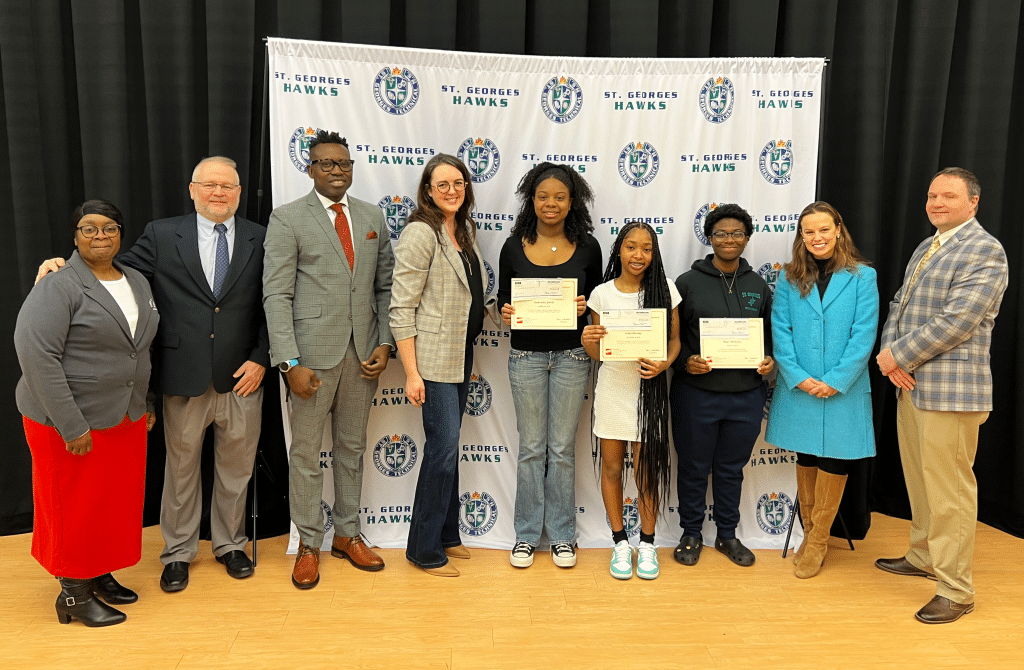The Sharing the Joys of Construction Essay Competition was created by EDiS Company in 2021 for Delaware trade and vocational high school students to shine a spotlight on the positive impact diversity has in the architecture, engineering, and construction (AEC) industry during Black History Month. Students wrote about individuals or companies who have inspired them or have had a positive impact on the built environment. First place junior Nasir Williams, second place freshman India Motley, and third place junior Gabrielle Smith won $750, $500, and $250 respectively. Sussex Technical High School runner up is senior Tyler Keyek, winning $100, and the POLYTECH High School runner up is Sarina Forston, winning $100. Each winner had their owner sponsor teacher who won $100 to use in their classrooms.

Grade: 11 School: St. Georges Vocational Technical High School
Sponsor Teacher: Tammy Flood-Stinson
David Adjaye
The world around us is a product of the creativity and the innovation of architects, engineers, and designers that came before us. African American architects are among the most talented and innovative individuals in this industry, however, their work has often gone unnoticed. One African American architect who has made significant contributions is David Adjaye. Born in Tanzania in 1966, Adjaye grew up in Ghana and then moved to London, where he studied architecture at the London South Bank University. After working with various architects, he founded his own firm, Adjaye Associates, in 2000. He has designed several well-known buildings, such as the National Museum of African American History and Culture in Washington DC, the Idea Store in London, and the Nobel Peace Center in Oslo. His works are characterized as bold, innovative designs that push the boundaries of traditional architecture.
The National Museum of African American History and Culture is one of Adjaye’s most famous works. Adjaye’s design for the building reflects African American culture with its unique exterior. The building is made up of bronze aluminum panels that are inspired by the ironwork crafted by enslaved African Americans in the 19th century. The panels are called Yoruban Caryatid, which is a traditional wooden column topped by a crown. The building’s interior is equally impressive, with tiered structures that guide visitors through the exhibits. The museum’s centerpiece is a three-story atrium that houses a sculpture made up of thousands of bronze panels. The space is both awe-inspiring and poignant, which demonstrates Adjaye’s sensitivity to the history and culture of African Americans.
Another African American architect who has contributed significantly to the architectural world is Paul R. Williams. Born in Los Angeles in 1894, Williams was the first African American to become a member of the American Institute of Architects in 1923, which is America’s highest honor for an architect. Williams was known for his ability to design buildings that were both functional and beautiful, while being an expert in various architectural styles. Williams learned to draft architectural drawings upside down in order for his clients to view the drawings them right side up. Williams designed many noteworthy buildings in Los Angeles, including the Beverly Hills Hotel, the Golden State Mutual Life Insurance Building, and the First African Methodist Episcopal Church. He also designed many of the homes in the Hollywood Hills, including the homes of Frank Sinatra, Lucille Ball, and Desi Arnaz. Williams’ legacy is not just in the buildings he designed but also in the barriers he broke down. Williams overcame racial prejudice as well as being deterred away from architecture by elders in his community. As an African American in a profession dominated by white men, Williams faced significant challenges throughout his career. However, he persevered, and his work showcased his talent and determination.
African American architects such as David Adjaye and Paul R. Williams have made significant contributions to the architectural industry. Their work reflects a deep understanding of African American culture and history. These artists have overcome tremendous obstacles to
achieve success, and their work is proof of their talent and determination. David Adjaye and Paul R. Williams have motivated me in my own architectural journey from looking at architecture schools, building my portfolio, and gathering inspiration. The beautiful buildings and infrastructure they have created will continue to influence architects for years to come.



